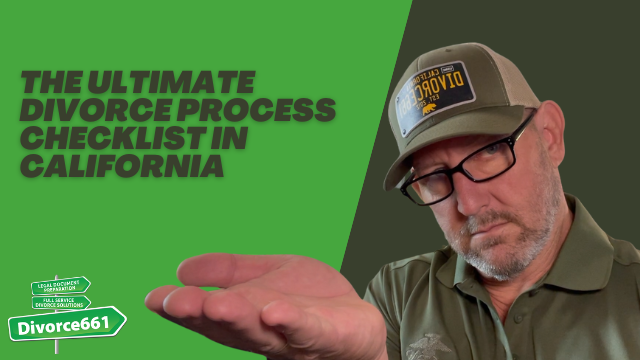The Ultimate Divorce Process Checklist in California
Navigating a divorce can feel overwhelming, especially if you’re not familiar with the process. Many people misunderstand the steps involved, leading to confusion and delays. This article breaks down the essential checklist for divorce in California, ensuring you know what to expect and what actions to take. Whether you’re working with a professional or handling things on your own, having a clear roadmap is vital.
Understanding the Divorce Process
The divorce process in California can be complicated, but it is manageable when you understand the steps involved. This checklist serves as a case management order, helping you keep track of your progress. It’s important to note that while this example is tailored for Riverside County, the overall process remains consistent across California.
Initial Steps After Filing
Once you file your divorce petition, the clock starts ticking. Here’s what you need to do:
- File the Petition: After filing your divorce, you’ll need to serve your spouse with the paperwork.
- Serve the Papers: You have 60 days to serve the petition and case management order to your spouse. You can do this personally, through the sheriff, or by using a Notice and Acknowledgment form, which your spouse will sign.
- Proof of Service: File the proof of service with the court within the 60-day timeframe. This keeps your case on track.
Financial Disclosure Requirements
Financial transparency is crucial in a divorce. You will need to provide certain financial documents:
- Preliminary Declaration of Financial Disclosure: This includes forms FL-142 and FL-150, which detail your assets, debts, income, and expenses. These forms are not filed with the court but shared between you and your spouse.
- Declaration Regarding Service of Disclosure: File form FL-141 with the court, confirming that you served your financial disclosures.
Streamlining the Process
In my practice, we expedite these steps. Instead of waiting for the 60-day mark, we file all necessary documents together. This approach saves time and minimizes the court’s backlog.
Responding to the Petition
If your spouse is served, they have 30 days to respond. However, if you are amicable, a response may not be necessary.
- Uncontested Divorce: If both parties agree, we often skip filing a response, which saves you the $435 fee.
- Default Judgments: If no response is filed, you can move forward with a request to enter default within 60 days.
Types of Default
There are two types of defaults: with agreement and without agreement. If you file for default without agreement, the process can become complicated and is often rejected by the court.
Filing for Judgment
Once all forms are filed, your next step is to file for a default judgment:
- File Default Judgment Paperwork: This must be done within 60 days after the default request is filed.
- Final Judgment Timeline: Ideally, finalize your divorce no later than 18 months after the petition is filed, although you have technically up to five years.
Common Pitfalls
One common mistake is failing to file necessary declarations or disclosures on time. If you miss a deadline, the court may issue a status conference to check on your progress.
Alternative Dispute Resolution
While some couples may need to go to court, many can find resolution through alternative methods:
- Mediation: This can help amicable couples agree on terms without needing a trial.
- Collaborative Law: This involves both parties working with attorneys to settle their issues outside of court.
Final Thoughts
The divorce process can be daunting, but understanding each step can ease your journey. Use this checklist as a guide, and remember that you are not alone in this process. Whether you choose to work with a professional or navigate the process yourself, clarity and organization are your best allies.
Get Help When You Need It
If you find yourself overwhelmed, consider reaching out for assistance. Professionals can guide you through the complexities, ensuring you don’t miss critical steps. Remember, the goal is to reach an amicable resolution and move forward with your life.
Resources
For more information on the divorce process in California, check out the following resources:
- Divorce661 – A full-service divorce solution for amicable couples in California.
- Facebook Page – Stay updated with helpful tips and resources.
- Podcast – Listen to discussions on divorce and family law.
- TikTok – Quick tips and insights in an engaging format.

